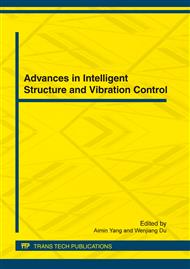p.297
p.301
p.307
p.313
p.318
p.323
p.327
p.331
p.337
Intermittent Faults Diagnosis in Wireless Sensor Networks
Abstract:
Sensor node intermittent faults which sometimes behave as fault-free are common in wireless sensor networks. Intermittent faults also affect network performance and faults detection accuracy, so it is important to diagnose the intermittent faulty nodes accurately. This paper proposes a distributed clustering intermittent faults diagnosis method. First, the network is divided into several clusters with the cluster heads should be diagnosed as good. Then, the cluster members are diagnosed by their cluster head. In order to improve the validity of proposed diagnose method, a strategy which collect data for many times is adopted. Analysis of fault diagnosable is given, and simulation results indicate the proposed algorithm has high fault detection accuracy.
Info:
Periodical:
Pages:
318-322
Citation:
Online since:
March 2012
Authors:
Price:
Сopyright:
© 2012 Trans Tech Publications Ltd. All Rights Reserved
Share:
Citation:


